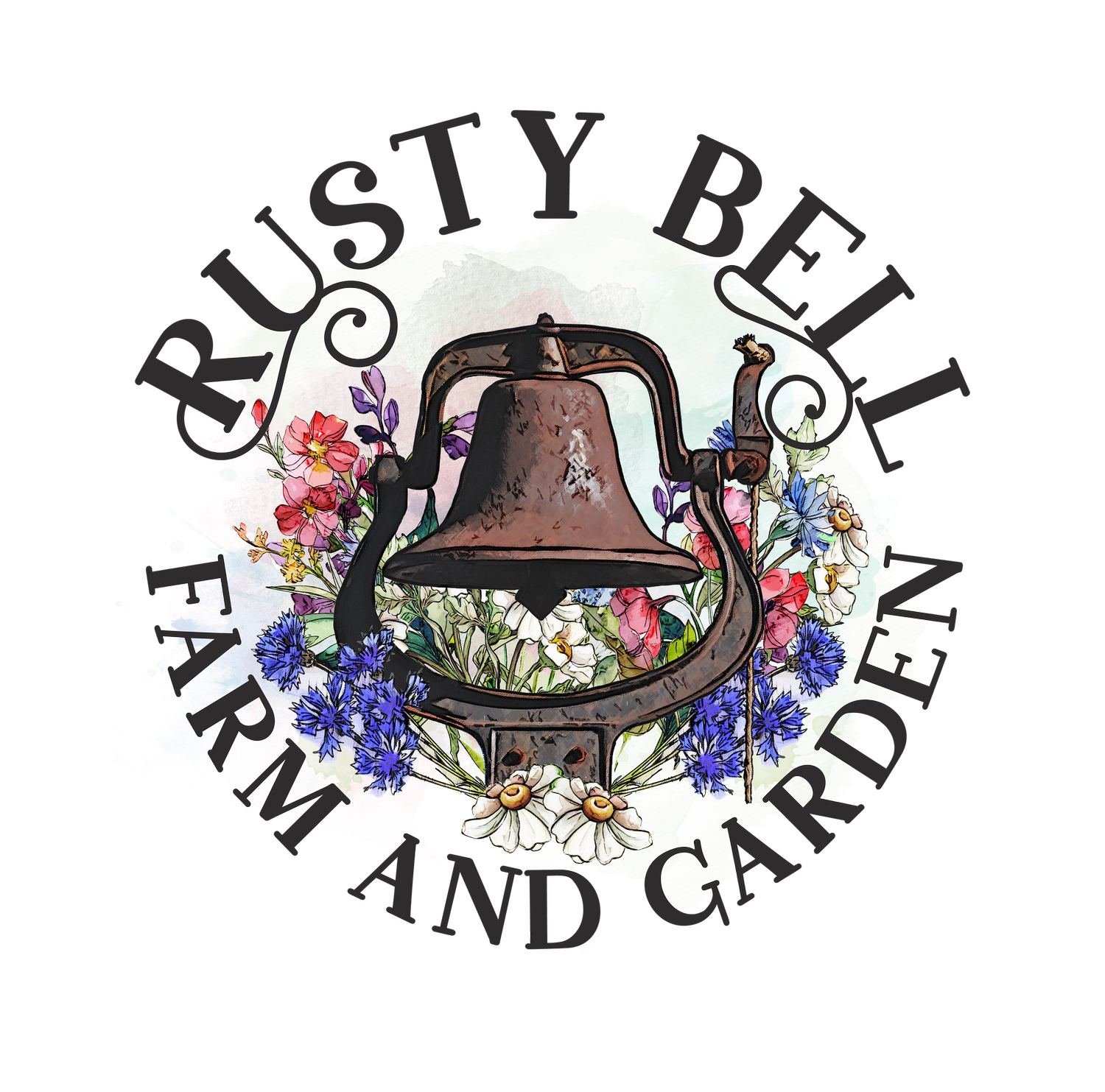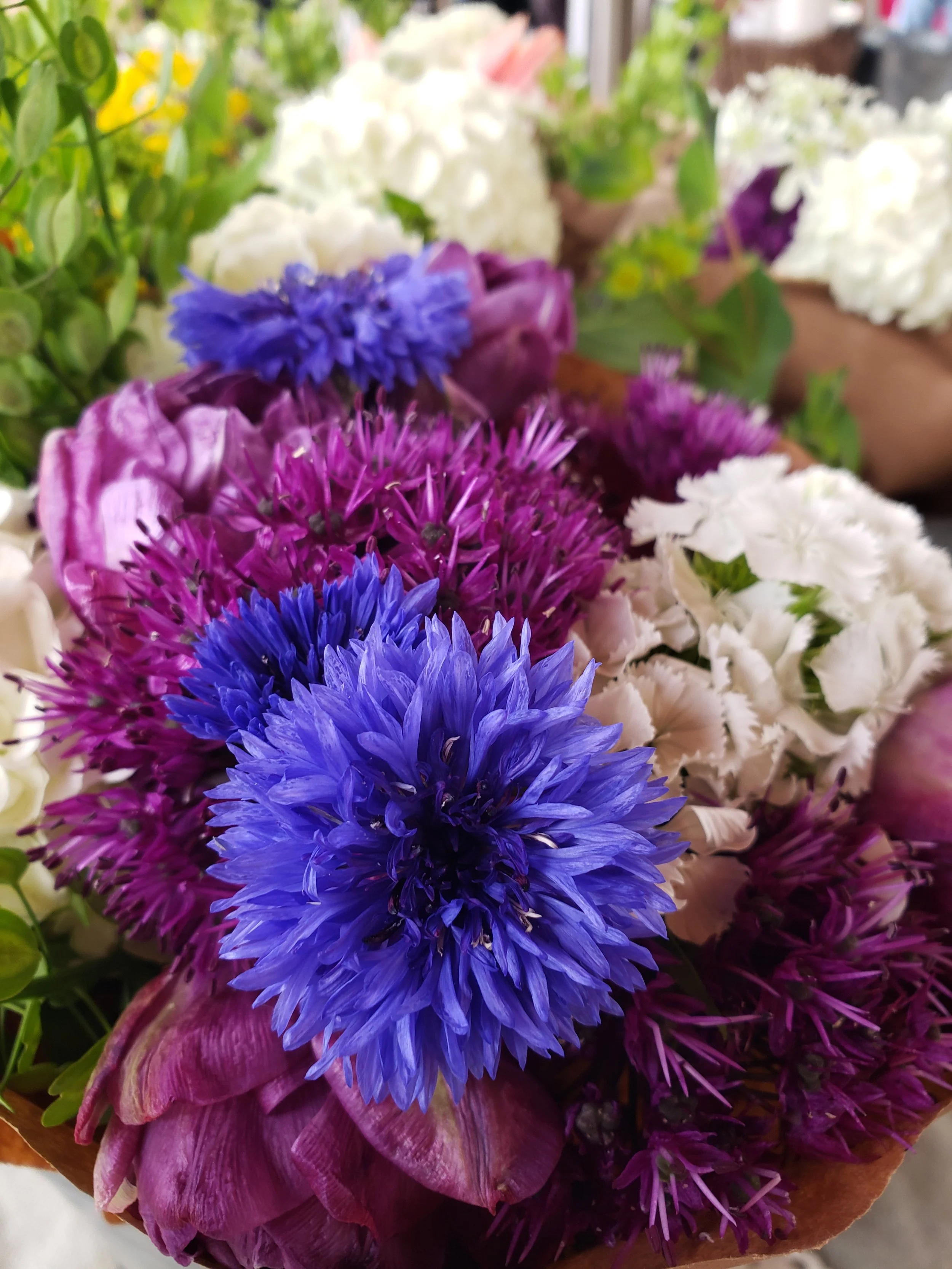Bachelor's Button Cookies
Cornflower Blue was my favorite color in my box of crayons.
Now, it’s my favorite color in our spring cut flower bouquets.
The deep blue of Centaurea cynus always catches my eye even when it’s mixed with the bright pinks, purples, and green colors that fill our May and June bouquets.
This hardy annual flower goes by many common names.
The name, Bachelor’s Button, comes from the Victorian era when it was customary for a bachelor to place the flower in the button hole of his suit coat to indicate he was unmarried and available.
Cornflower originates from England where the flower is native. Back in the old days of Europe, all grains growing in a field were referred to as “corn”. This wild flower was often seen growing in farmer’s fields and, therefore, was called “cornflower”.
Lastly, the name, Garden Knapweed comes from the Olde English and German word “Knobbe” - which means a knob, bump, button, or bud. The flower, in it’s bud stage, is a hard and compact, like a thistle. Knapweed is closely related to thistles.
When the puritans brought this flower with them to the New World they grew it for its beauty, medicinal purposes, and delightful taste.
We still have all of the colors (pinks, purples, white, and dark burgundy) available to us for growing today.
Cornflowers are edible, too!
Some of my favorite tea blends have cornflower in them; it adds a lovely peppery taste.
The petals can be mixed into salads or used for decorations on baked goods like cookies and cakes.
There’s even a cookie named after this flower.
You will find a wide variety of recipes for Bachelor’s Button cookies.
I have included a basic simple recipe for you to try while you enjoy these beautiful flowers in your bouquet, tea, and your garden.
Bachelor’s Button Cookies
3/4 cup butter
1 3/4 cups sugar
2 eggs
1 tsp vanilla extract
3 cups all-purpose flower
2 tsp baking powder
1/2 tsp salt
In a mixing bowl cream the butter and sugar. Add the eggs and vanilla.
Sift together the flour, baking powder, and salt. Add the mixture to the bowl of creamed sugar, butter, eggs, and vanilla. Mix all ingredients together until well blended.
Drop the dough in teaspoon sized balls onto a greased cookie sheet.
Bake at 375 degrees for 8 to 10 minutes. Press a thumb print into the center of the cookie before it is entirely cooled. Be careful! Don’t burn yourself!
I like to add frosting into the thumb print, but you can add jam, a strawberry slice, a chocolate kiss, or anything else your heart desires!






